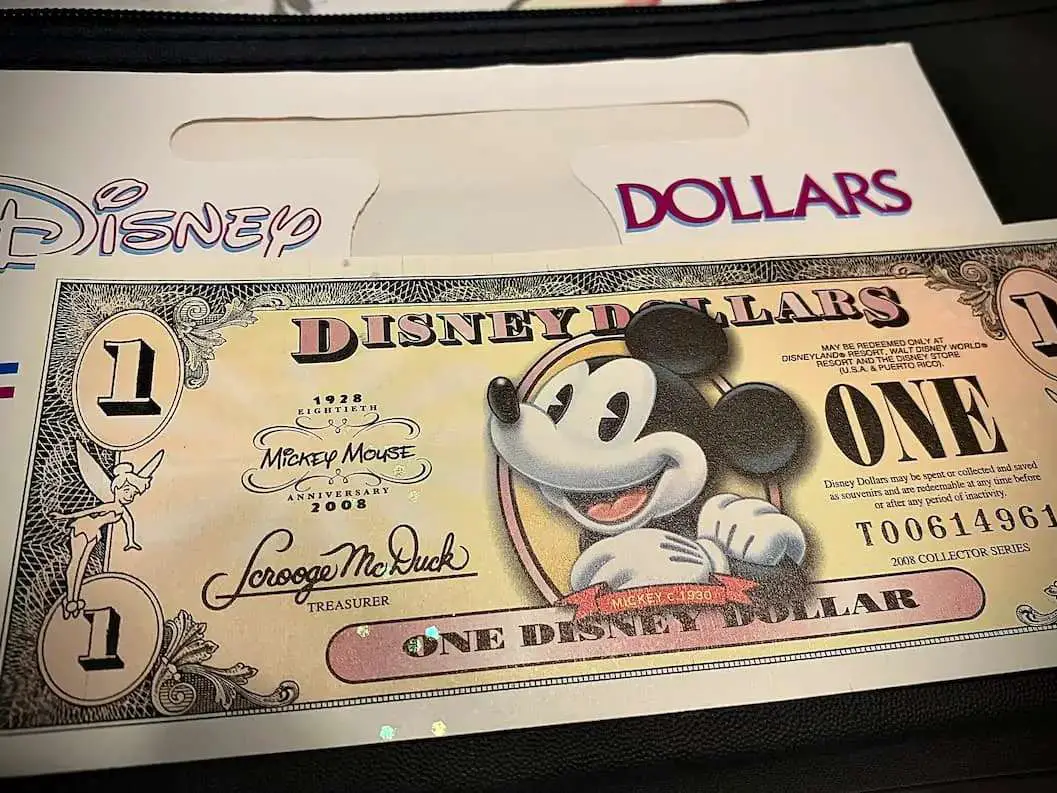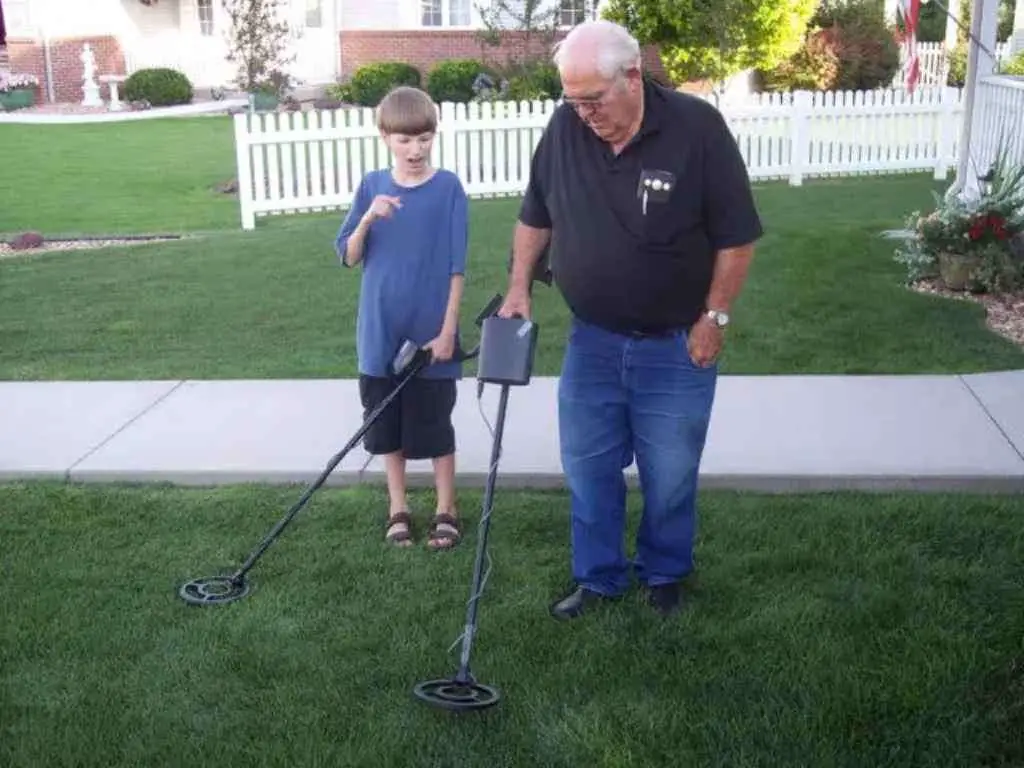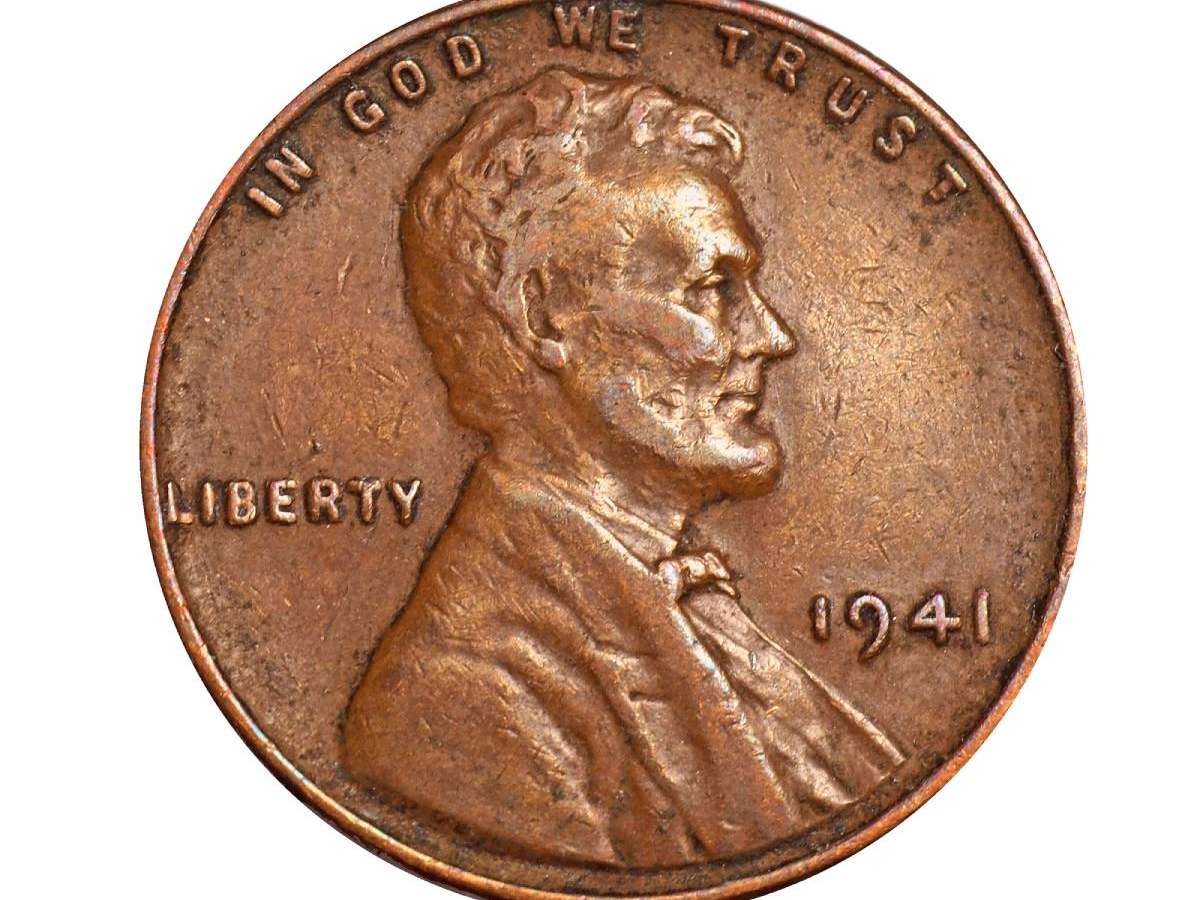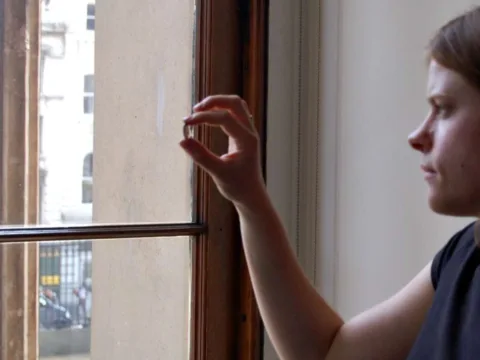
Maybe you’ve heard about error coins and variety coins — and you’re wondering what’s the difference between an error and a variety?
While they may seem similar, errors and varieties are technically quite different and are created in different ways.
I’m going to explain how U.S. coin errors and varieties differ — and what these types of coins are worth!
Aren’t Error Coins & Variety Coins Kinda The Same?
You find a weird coin in your pocket change…
It’s an error, right? Maybe a variety.
Hmm… What’s the difference? Does it matter? A weird coin is a weird coin, right? And certainly all weird coins are errors.
Or are they?
Many coin collectors confuse these terms, using them interchangeably. And, while some varieties are errors, no error is ever technically a variety.
As you’ll see in this article, the difference between varieties and errors largely comes down to how the mistake or odd distinction was created on the coin.
Error Coins vs. Variety Coins
Errors and varieties are two types of distinctive coins that differ in some intended or unintended way from the basic design.
Coin Errors Explained

U.S. Mint errors are coins with oddities caused by either human or mechanical mistakes.
The errors are normally confined to just one specific coin or perhaps a few struck one after another.
Here are the types of error coins, and what they’re worth today…
Types of Error Coins
- – Die Errors
- Die Breaks
Many defective or aging coin dies have cracks, and these will show on the coin as raised lines or lumps of metal known as die cuds and die breaks. These errors are worth about $5 and up.
- – Planchet Errors
- Blank planchets
These are coins not struck by dies, so they have no heads or tails. Values are $3+.
- Clipped Planchets
Coins with straight- or crescent-shaped edges are caused by being mis-cut and are worth about $5 or more.
- Off-Metal Or Wrong Planchet Errors
These particularly rare errors happen when a coin is struck on a planchet that was intended for another coin (such as a Jefferson nickel design being struck on a planchet for a Lincoln cent). Wrong planchet and off-metal errors are worth about $200 and up.
- – Strike Errors
- Broadstrikes
When a coin isn’t struck in its retaining collar, the coin will be flatter and wider than usual and will not show a finished rim. Broadstrikes may be struck centered or off-center but will show all lettering and design details. Values start at around $5 and can go up dramatically, depending on the coin.
- Brockages
If a coin stays adhered to a die instead of ejecting as usual, the stuck coin will subsequently strike the next planchet in line, impressing a mirror image of the same side of the coin onto the next coin. This can result in a coin with effectively two heads or two tails. Brockage errors are worth about $75 and up.
- Multiple Strikes
Coins that aren’t properly ejected may be struck multiple times by the same die, creating a multiple strike error. (These are not the same thing as a doubled die, a variety originating with the creation of a die.) Multiple strikes can be worth $25 and up.
- Off Center Errors
When a coin isn’t properly contained in its collar or isn’t centered, the dies will hit the coin off square, and part of the design will be missing. Off-center errors are most collectible when about 5% to 10% or more of the design is missing. The values for such errors increase depending on the coin and percentage off-center, but they start around $5.
- – Other Types Of Errors
- Double Denominations
Somewhat synonymous with the wrong planchet error (mentioned above) and the mule error (mentioned below), a double denomination coin has been struck twice by dies of two different denominations. This error can only happen on coins previously struck as a smaller denomination. Thus a Roosevelt dime later struck by Lincoln cent dies is one possible double denomination. Or a Jefferson nickel that latter passed through the Washington quarter dies is another. Double denomination errors showing a strong impressions of the original design are worth more — values for these very rare and desirable errors start at about $1,000.
- Mules
One of the rarest and most valuable types of errors is a mule. A mule error marries an obverse and reverse that were never intended to be paired. The 2000 Sacagawea mule dollar coin is the most famous confirmed United States mule error coin, and it’s worth more than $100,000! Another is the 1959-D Lincoln wheat penny, valued at around $50,000.
- Strikethrough Errors
Sometimes grease, oil, or other foreign matter will get into a die, obscuring that part of the design from being properly and fully struck onto a coin. Strikethrough coins are often identified by a certain part of the coin’s design or lettering being missing (or only faintly visible). Strikethrough errors are worth about $10 and up.
- Transitional Errors
These occur when a coin type is about to or has recently been through an intended change. However, a mistake in placing the wrong die on the press or feeding the wrong planchets into the presses causes an error in which there is a blending of both the previous design and the new coin design or content specifications. Some of the rarest and most famous transitional errors include:
- 1943 Lincoln bronze cent — $100,000+
- 1982-D Lincoln Small Date Bronze penny — $10,000+
- 1965 Roosevelt silver dime — $3,500+
Coin Varieties Explained
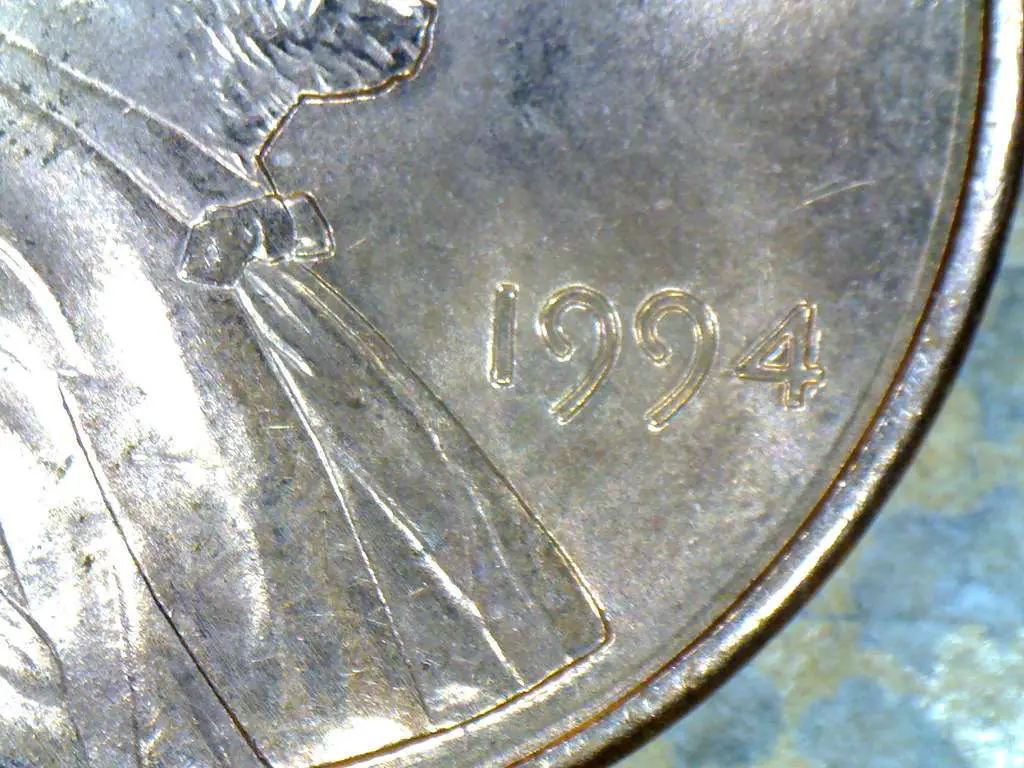
Varieties involve intentional and unintentional characteristics relating to a particular die.
Furthermore, they may be replicated on many coins at a time — as many as thousands!
Here are the types of coin varieties, and what they’re worth today…
Types of Variety Coins
- – Date & Mintmark Varieties
There are many coins with some interesting varieties involving the size and shaping of their dates and/or mintmarks.
Here are a few examples:
- 1960 and 1960-D large and small date Lincoln pennies
- 1960 Lincoln small date penny — $2+
- 1960-D Lincoln small date penny — 10 cents+
- 1960 Lincoln large date penny — 10 cents+
- 1960-D Lincoln large date — 10 cents+
- 1970-S large and small date Lincoln pennies
- 1970-S Lincoln small date penny — $25+
- 1970-S Lincoln large date penny — 10 cents+
- 1982 and 1982-D bronze and zinc large and small-date pennies
- 1982 Lincoln bronze large date — 20 cents+
- 1982 Lincoln bronze small date — 40 cents+
- 1982 Lincoln zinc large date — 40 cents+
- 1982 Lincoln zinc small date — 75 cents+
- 1982-D Lincoln bronze large date — 20 cents+
- 1982-D Lincoln zinc large date — 30 cents+
- 1982-D Lincoln zinc small date — 25 cents+
- 1913 Mound (Variety I) and Line (Variety II) Buffalo nickels
- 1913 Buffalo Variety I nickel — $9+
- 1913-D Buffalo Variety I nickel — $12+
- 1913-S Buffalo Variety I nickel — $35+
- 1913 Buffalo Variety II nickel — $8+
- 1913-D Buffalo Variety II nickel — $100+
- 1913-S Buffalo Variety II nickel — $300+
- 1945 Micro-S Mercury dime — $3+
- 1917 Exposed Breast (Type I) and Chain Mail (Type II) Standing Liberty quarters
- 1917 Standing Liberty Variety I quarter — $15+
- 1917-D Standing Liberty Variety I quarter — $20+
- 1917-S Standing Liberty Variety I quarter — $25+
- 1917 Standing Liberty Variety II quarter — $18+
- 1917-D Standing Liberty Variety II quarter — $25+
- 1917-S Standing Liberty Variety II quarter — $30+
- 1964 Heavily Accented Hair proof Kennedy half dollar — $35+
- 1972 Eisenhower dollar varieties
- 1972 Eisenhower Variety I dollar, flattened Earth and three islands off Florida — $5+
- 1972 Eisenhower Variety II dollar , high relief with round Earth and indistinct islands — $75+
- 1972 Eisenhower Variety III dollar, high relief — $5+
*Values listed above are for variety coins grading uncirculated or better, EXCEPT for coins minted before 1960 — which refer to coins in average circulated grades.
- – Doubled Die Varieties
If this doubled die goes unnoticed by U.S. Mint officials, it may eventually strike dozens, hundreds, even thousands of doubled die coins before it’s finally removed from service.
A coin’s design is impressed into a die by a hub. Usually a die is stamped once by a hub — sometimes twice. If on that second impression, the hub and newly created die are slightly rotated from the orientation of the previous hubbing, a doubled die will occur.
The result is a slightly overlapped misalignment of the same design twice on the coin.
NOTE: A doubled die is very different from machine doubling on a coin.
Here are some of the most popular doubled die coins:
- 1955 Lincoln doubled die penny — $1,100+
- 1969-S Lincoln doubled die penny — $25,000+
- 1972 Lincoln doubled die penny — $250+
- 1983 Lincoln doubled die penny — $200+
- 1984 Lincoln doubled die penny — $125+
- 1995 Lincoln doubled die penny — $50+
- 1943-P Jefferson doubled eye nickel — $20+
- 1964-D Roosevelt doubled die dime — $80+
- 1937 Washington doubled die quarter — $500+
- 1942-D Washington doubled die quarter — $300+
- 1943 Washington doubled die quarter — $250+
- 1943-S Washington doubled die quarter — $150+
- – Missing Mintmark & Design Feature Varieties
Dies experience a lot of stress during their lifespan, and sometimes these hard-working pieces of steel get damaged in use. Mint officials can make repairs to the coin dies to help them last longer — including polishing the dies to buff out the damage.
Often this die polishing inadvertently removes more than just the damaged areas. Over-polishing has resulted in a number of interesting and valuable variety coins, including these:
- 1922 Lincoln Plain, No-D Lincoln penny — $500+
- 1937-D Buffalo 3-Legged nickel — $500+
- 1982 Kennedy No FG (designer Frank Gasparro’s initials) half dollar — $20+
While many missing details on coins are caused by overzealous polishing of the coin dies, not all of them are. One of the most common types of missing-detail coin varieties involves an absent mintmark. There are several types of collectible proof coins with missing mintmarks, and even some business-strike coins.
Here are some of the most sought-after missing-mintmark coins:
- 1990 Lincoln No-S proof penny — $3,000+
- 1971 Jefferson No-S proof nickel — $900+
- 1968 Roosevelt No-S proof dime — $20,000+
- 1975 Roosevelt No-S proof dime — $475,000+
- 1982 Roosevelt No-P dime — $50+
- 1983 Roosevelt No-S proof dime — $500+
- – Repunched Mintmark Varieties
Until the late 1980s and early ’90s, mintmarks were individually punched onto working dies by hand. These hand-punched mintmarks weren’t always stamped correctly onto the dies — which often led to mintmarks that were not placed in the correct position.
To correct the situation, mint officials repunched the mintmark in the correct position. Most often this resulted in two appearances of the mintmark in the same approximate location. On occasion, there would be two or more repunchings — leaving three or more impressions of the mintmark in slightly (or sometimes dramatically) different positions.
There are literally thousands of different, distinct varieties stemming directly from the position of mintmarks on various United States coins. Common, obscure repunched mintmark varieties are worth about $3 to $5.
Here are a few of the most widely collected repunched mintmark varieties:
- 1909-S Over Horizontal S Lincoln penny — $100+
- 1943-D Boldly Doubled Mintmark Lincoln penny — $35+
- 1954-S Over D Jefferson nickel — $20+
- 1955-D Over S Jefferson nickel — $35+
- 1879-CC Over CC Morgan dollar — $300+
- 1900-O Over CC Morgan dollar — $55+
Here’s a complete list of all U.S. coin varieties by denomination from half cents to dollar coins — including commemoratives, Gold Eagles, American Eagles, and Bullion coins.
So, Error Coins & Variety Coins Really ARE Different!
Yes!
Now, that doesn’t mean there aren’t some collectors who will still refer to varieties (such as doubled dies and missing mintmarks) as errors.
Because, in a sense, those really are errors. Doubled dies, missing mintmarks, and other similar anomalies were never necessarily intended to occur.
Often, these are called error-varieties. And, really, that’s a fair term.
But when it comes down to making the call on exactly what error coins versus variety coins are… hopefully this article has helped make those numismatic distinctions much easier for you to determine!
READ NEXT: 3 Error Coin Lists to save – (1) Rare Coin Errors (2) Common Coin Errors (3) All Coin Errors by Denomination
I’m the Coin Editor here at TheFunTimesGuide. My love for coins began when I was 11 years old. I primarily collect and study U.S. coins produced during the 20th century.
I’m a member of the American Numismatic Association (ANA) and the Numismatic Literary Guild (NLG) and have won multiple awards from the NLG for my work as a coin journalist. I’m also the editor at the Florida United Numismatists Club (FUN Topics magazine), and author of Images of America: The United States Mint in Philadelphia (a book that explores the colorful history of the Philadelphia Mint). I’ve contributed hundreds of articles for various coin publications including COINage, The Numismatist, Numismatic News, Coin Dealer Newsletter, Coin Values, and CoinWeek.
I’ve authored nearly 1,000 articles here at The Fun Times Guide to Coins (many of them with over 50K shares), and I welcome your coin questions in the comments below!


